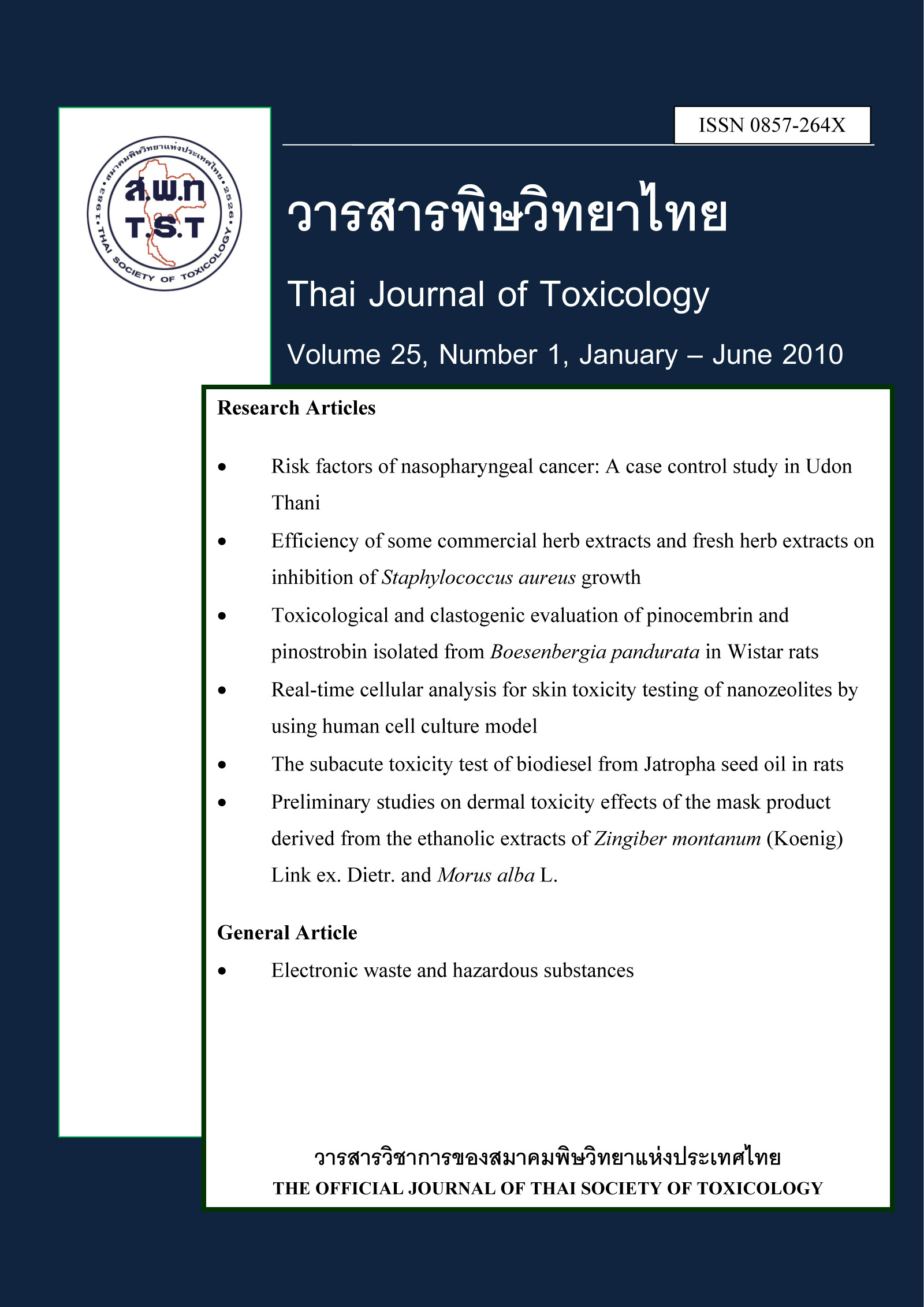Electronic waste and hazardous substances
Main Article Content
Abstract
E-waste is defined as computer central processing units, monitors, televisions, cell phones and other digital devices. The rapidly increasing number of e-waste has the potential to create serious consequences for human health and environmental quality because hazardous chemicals are used in components of electrical and electronic devices that can release into the soil, water supplies, and evaporate into the air when these electronic wastes are placed into landfills or incinerators. Toxic heavy metals most commonly found in e-wastes include lead, mercury, cadmium, chromium, beryllium, antimony and other toxins such as brominated flame retardants, polyvinyl chloride, polychlorinated biphenyls, triphenyl phosphate, nonylphenol, and polychlorinated naphthalene. Moreover, dioxins and furans are released when electronics containing chlorinated plastics or plastic treated with brominated flame retardants are incinerated. The European Union (EU) has introduced legislation making producers responsible for their end of life products and banned the use of certain hazardous substances in electrical and electronic products. However these products are being purchased at a rapidly increasing rate. Ewaste now should be the first priority public health issue worldwide.


